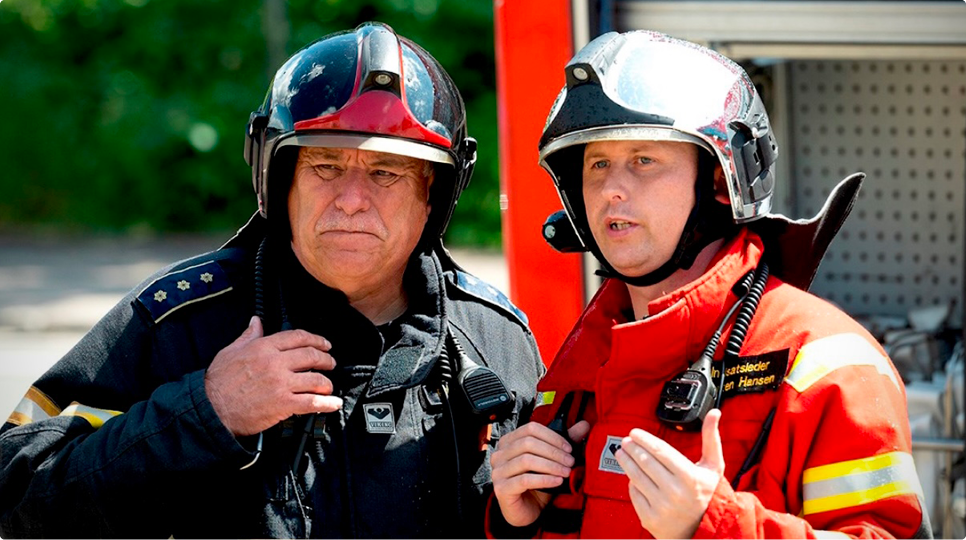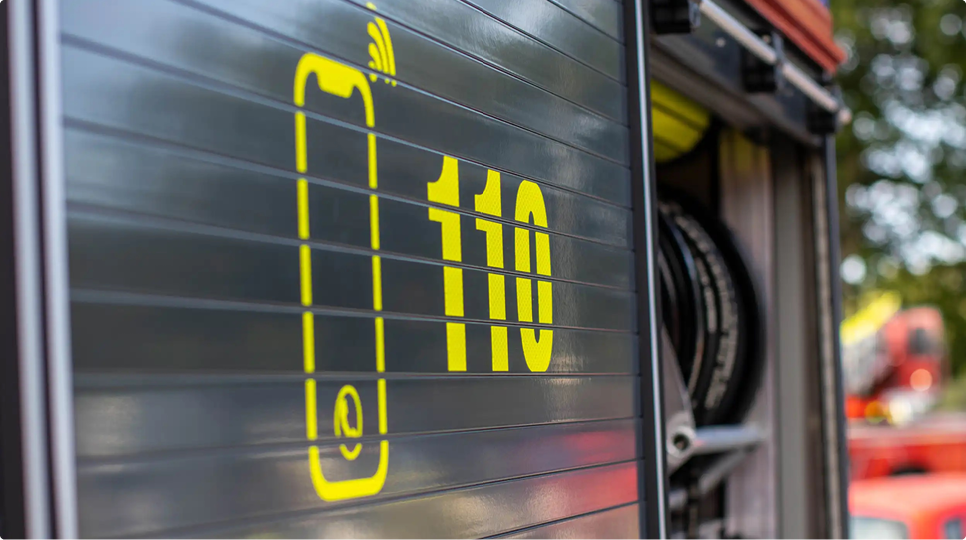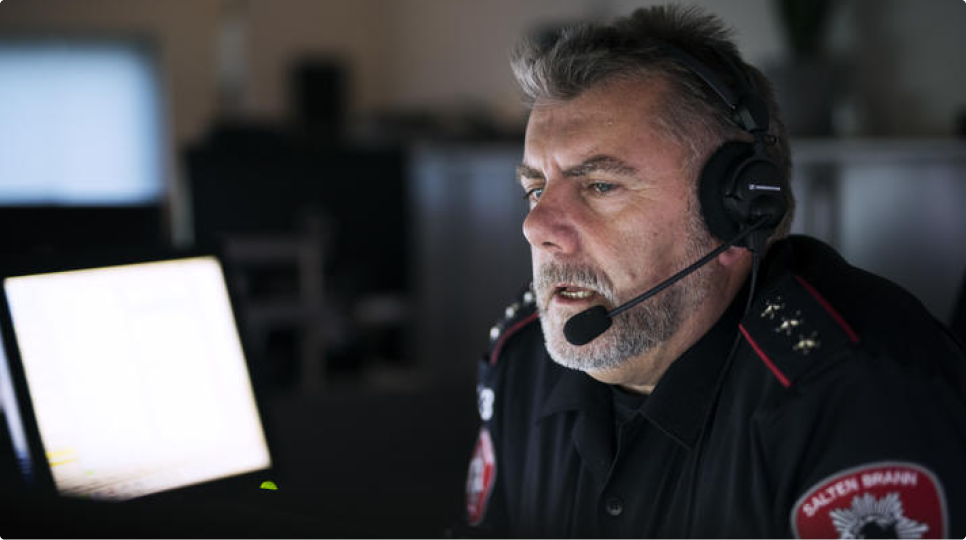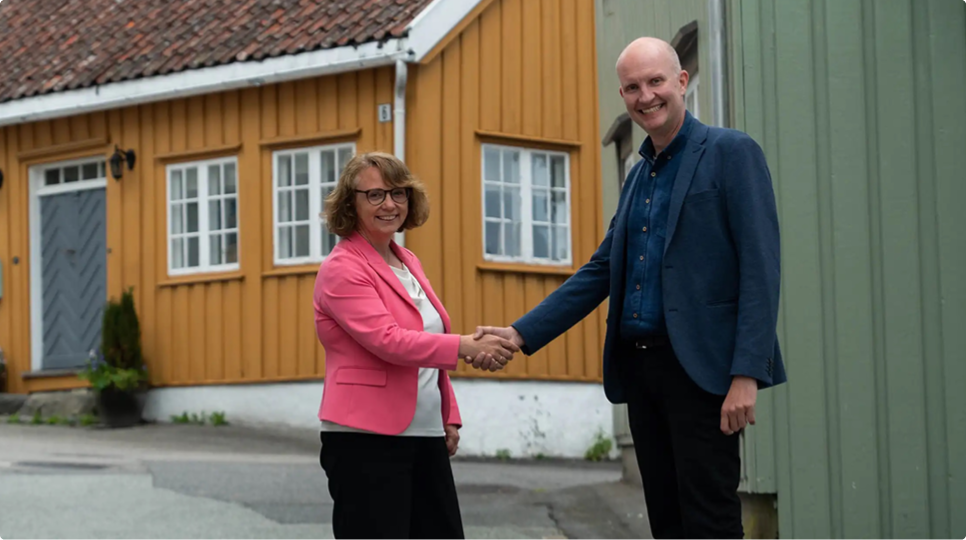The West Zealand Fire Service in Denmark use live video to strengthen internal communication and operational efforts
Over the past few years, the Danish West Zealand Fire Service has implemented our video solution, IncidentShare. Initially, this solution was primarily employed for live video sharing during operations involving the fire brigade's drone emergency services. However, they have recently broadened its utilization as part of a pilot project, which now encompasses live video transmission from both vehicles and body cameras.
The primary aim of this expansion is to support their partners and expert emergency services with constantly updated visual snapshots of the situation, enabling them to provide essential support to ongoing operations.

The West Zealand Fire Service employs various technologies, including body cameras and in-vehicle cameras, for the purpose of sharing live video. Morten Hansen, who serves as the Area Manager within the Training Department at the West Zealand Fire Service says:
"When our partners and expert emergency services gain access to the visual information provided by the fire service, it empowers them to assist us more effectively. It allows them to visualize what I, as a task leader, am describing. It's a valuable tool that enables common situational awareness and ensures we stay ahead."
Specifically, within the West Zealand Fire Service, this procedure is executed by emergency managers who utilize body cameras while responding to emergency incidents. These cameras transmit live video feeds directly to the fire brigade's alarm control center, enabling the center to subsequently distribute the live video stream. Morten Hansen regards this live broadcast as a robust enhancement to the already robust cooperation established with partners and other emergency services
"It's a reality that not all units and partners arrive at the scene of the accident simultaneously. Live streaming serves as an effective tool for everyone who has not yet arrived at the scene to stay updated."
says Morten Hansen and continues:
"You have a significantly improved chance of gaining a current perspective of the situation when you're in close proximity, receiving both real-time audio and visual feeds. I act as a filter in deciding what to convey next. Now, our partners and expert emergency services have the capability to perceive – see and hear - the same information as I do."
Assistance during chemical spills
 The sharing of live streaming has already demonstrated its immense value during an incident involving a potentially hazardous chemical spill. Morten Hansen assumed the role of incident leader at the initial stages of the event and confronted a complex situation with insufficient information. By employing a body camera, he was able to live-stream video directly to the fire brigade's control center. This enabled the center to conduct an immediate assessment of the chemical incident based on the available information from the live video, concurrently with Morten's operational activities.
The sharing of live streaming has already demonstrated its immense value during an incident involving a potentially hazardous chemical spill. Morten Hansen assumed the role of incident leader at the initial stages of the event and confronted a complex situation with insufficient information. By employing a body camera, he was able to live-stream video directly to the fire brigade's control center. This enabled the center to conduct an immediate assessment of the chemical incident based on the available information from the live video, concurrently with Morten's operational activities.
"When they noticed that I had a moment, they reached out to me and provided information regarding the substance and its characteristics. This serves as a noteworthy example of how the 'back office,' in this instance, the central, can offer support to the operational team through IncidentShare," Morten Hansen affirms.
Especially when dealing with chemical spill, it's not only the emergency hotline that proves valuable for seamless communication. The Chemical Emergency - Kemisk Beredskab- is a Danish on-call system accessible to all emergency agencies 24/7. While physically based in Copenhagen, IncidentShare enables the West Zealand's fire service to directly stream and seek expert assistance from this resource.
Started as a learning tool
The adoption of body cameras initially began as an educational tool within the West Zealand's fire service. Initially, these cameras were introduced with the purpose of facilitating a structured review of operational missions, allowing task and team leaders to methodically assess the sequence of events and evaluate their own contributions following each operation.
"From a purely operational standpoint, we aimed to introduce an educational instrument that would enable individual managers to gain a better understanding of their own communication skills and behavioral patterns during an operation. In certain situations during an operation, individuals may experience significant pressure, and post-operation insights can offer valuable opportunities for learning and improvement."
Morten Hansen continues
"Beyond its role as a valuable learning tool, live streaming from body cameras provides the control center with an enhanced perspective of the on-site situation during accidents. It equips them with a means to stay at the forefront, particularly in situations where assistance may be required."
There is unquestionably significant value in IncidentShare for the West Zealand Fire Service across various operations. It has demonstrated its worth as a supportive tool during operations and as a developmental resource for individuals, teams, and task leaders. While the solution isn't necessarily designed to substitute manpower, it does empower the fire service and other emergency ervices to respond with greater speed. This heightened response capability can make a substantial difference in operations and, in the best-case scenario, potentially mitigate the severity of an accident or crisis situation.


